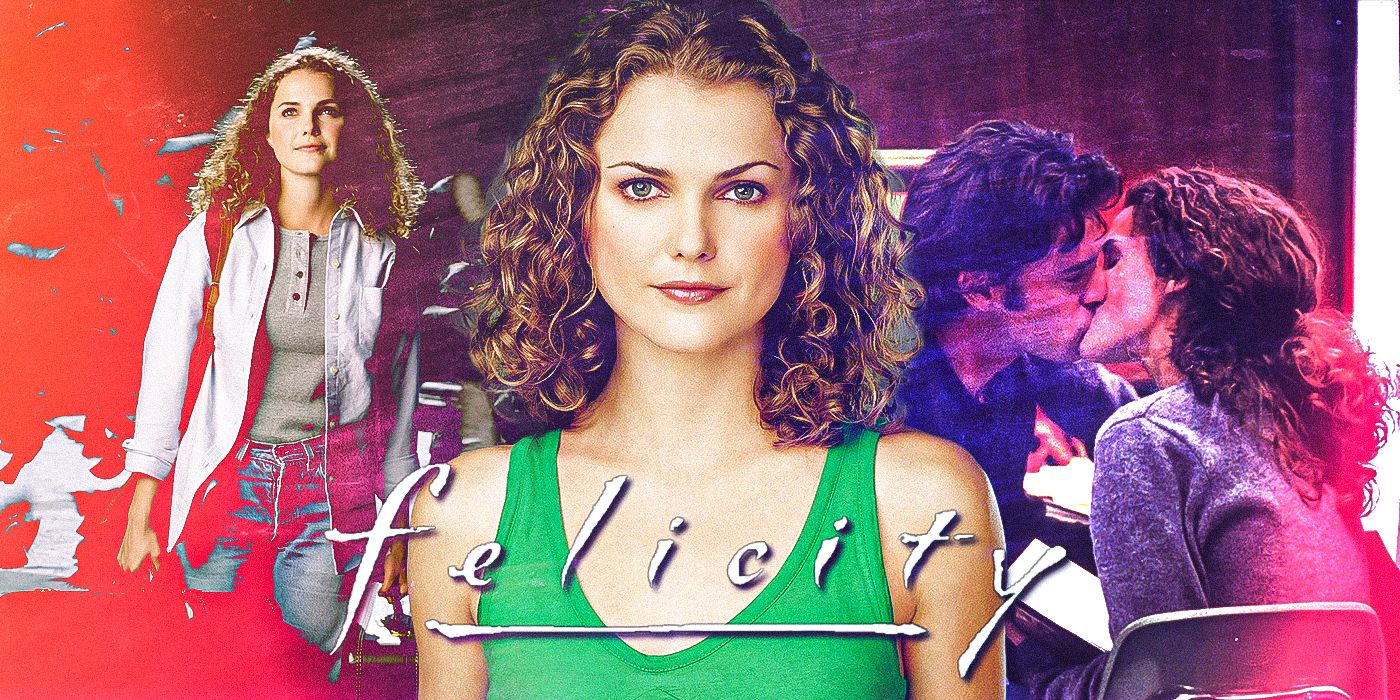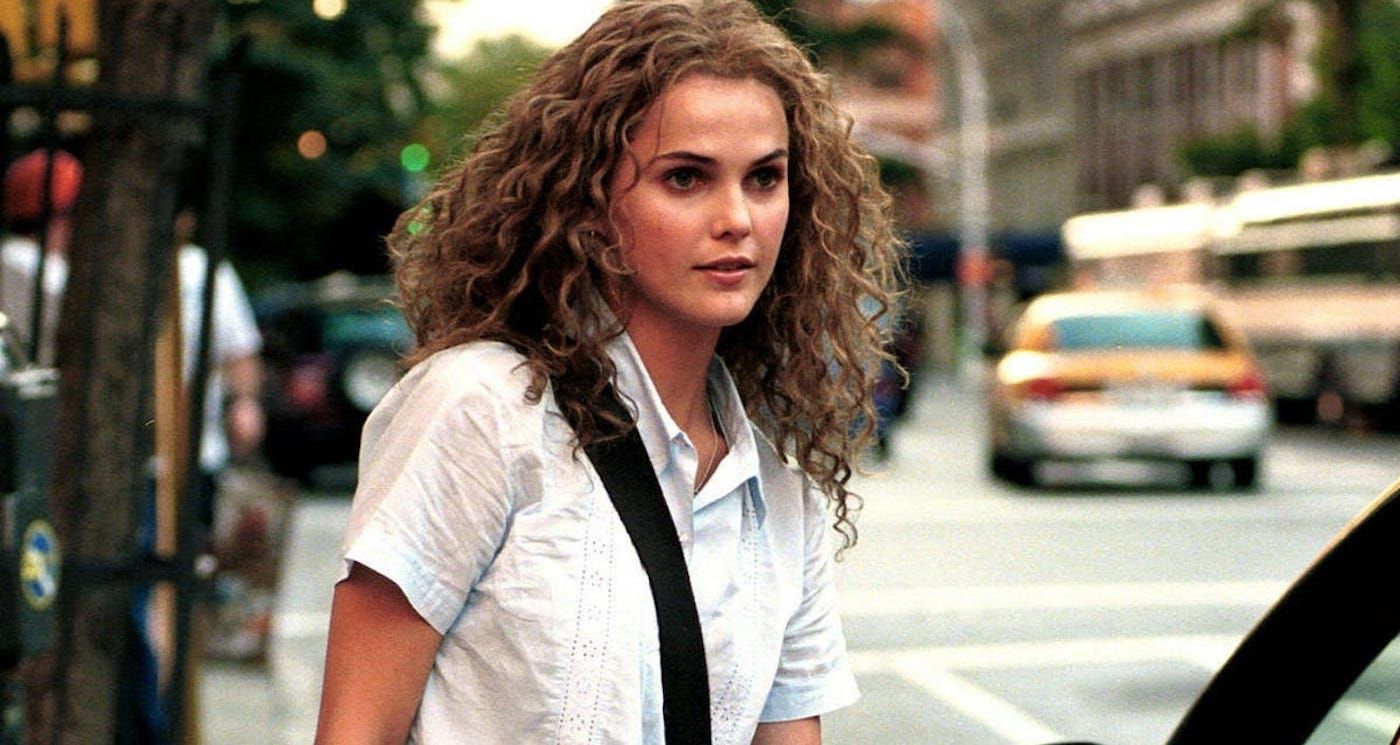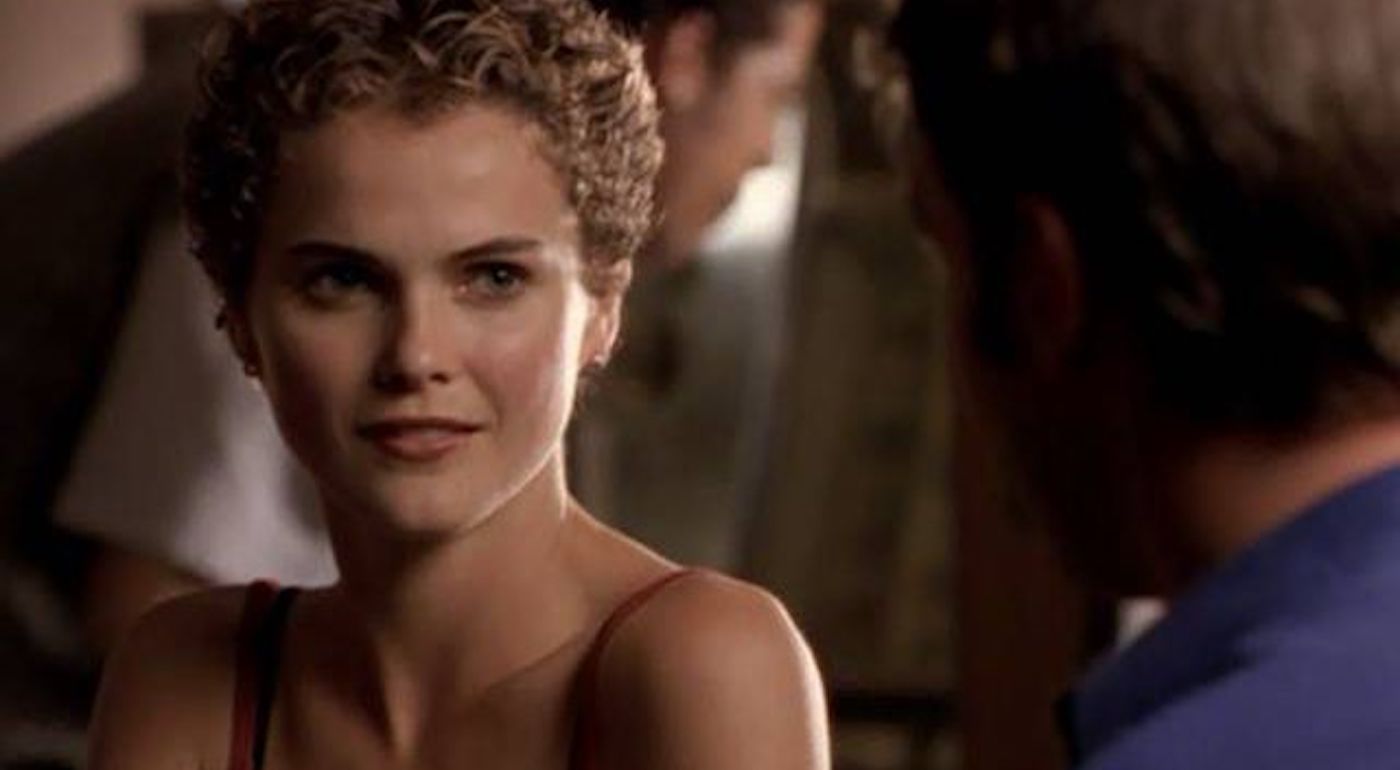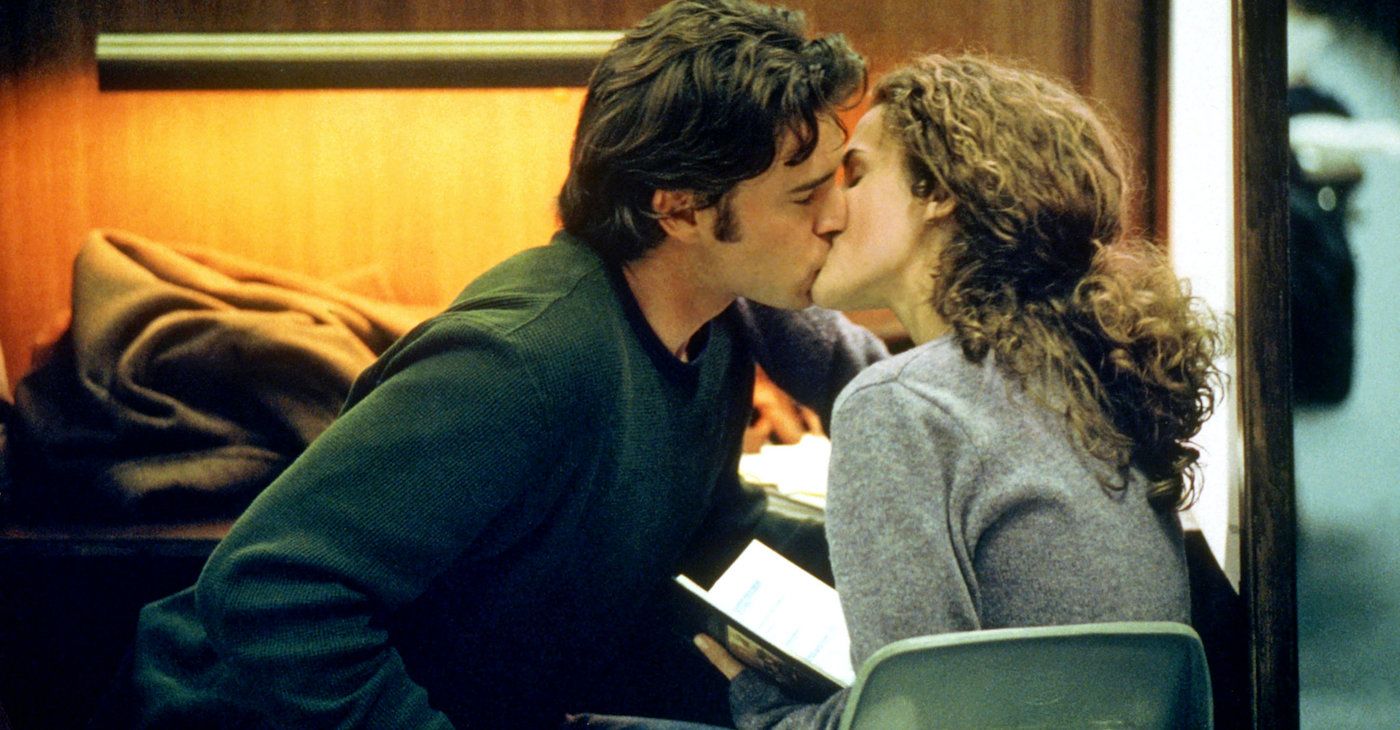“I came here because of Ben. But I’m staying because of me,” so tells Felicity Porter (Keri Russell) to her confused parents during the second episode of the beloved but short-lived WB teen drama Felicity, and so beginning the messy journey of self-discovery in young adulthood. Airing for four seasons between 1998 and 2002, the series follows the title character as she decides, on a whim, to completely change her post-secondary education plans after a boy she barely spoke to in high school, Ben Covington (Scott Speedman), composes a heartfelt entry in her senior yearbook alluding to missed opportunities. Following him to the University of New York (a fictionalized NYU — who wouldn’t let the network use the real name), she soon meets Julie (Amy Jo Johnson), Elena (Tangi Miller), Meghan (Amanda Foreman), and Noel (Scott Foley). This year marks the 20th anniversary of the end of Felicity, and even after two decades, it still is a heartfelt portrait of the college experience.
After Felicity drops this bomb on her parents, they demand an explanation for her sudden and out-of-character change of plans, abandoning pre-med at Stanford to pursue art in New York City. It would have, of course, been very easy to imply that Felicity moved across the country on a whim just because a gorgeous straight boy smiled and spoke to her once. (I mean, wouldn’t you?) But for more experienced viewers, and perhaps even those who might’ve been in college during Felicity’s original run, it quickly becomes evident that her impromptu move to New York had much less to do with pining over Ben than it did with creating a new version of herself that eclipses the paths laid out to her by other people.
Like many parents, Felicity’s mother and father take it personally when she tries to explain that she needs time away from them to figure out herself, quickly causing tension and tears. “You’ve never had a student who felt, you know, guilty just about growing up, have you?” Felicity asks All My Children’s Darnell Williams, who plays her academic advisor during the first season. And it’s difficult to name another network teen drama in recent memory that gives this much time and space to these feelings, specifically in reference to the North American college experience.
Before he came up with the high-stakes drama of Alias, Lost, or Fringe, J.J. Abrams, along with Matt Reeves and executive producers Brian Grazer and Ron Howard, was busy creating the angsty, overemotional college lives of Felicity and her friends, quickly placing it among the ranks of the more daring teen dramas of the ‘90s that didn’t shy away from exploring taboo topics, such as Party of Five or My So-Called Life. But while the initial tone of Felicity was enough for it to receive rave reviews from Rolling Stone and USA Today at the time, who referred to it as “the best” and the “talk of the town” respectively according to this vintage WB promo, the series quickly veered away from episodes about rape and consent and more into Felicity’s love triangle with Ben and Noel, which would ultimately form the emotional crux of the series.
Not to mention Felicity’s famous “Dear Sally” narrations, which often allowed her to narrate an episode as she recounts stories to her adult friend Sally on a tape recorder. Sally's voice, for a time, could be heard responding to Felicity in the form of Janeane Garofalo at the end of some Season 1 episodes saying, “Dear Felicity, here’s a story from my grown-up life that has basically nothing to do with what you and your friends are struggling with, but life sure is wild, isn’t it? Hope this helps.” And for a teen drama airing on The WB in the late ‘90s, it still somehow feels like a warm hug. Until it didn’t.
One of Felicity’s most defining pop culture moments, for better and for worse, was Keri Russell’s hairstyle change that occurred at the beginning of Season 2. Russell’s initial shoulder-length golden curls had become something of a signature look for the character, so when she sent the Felicity producers a photo of herself wearing a short-haired wig as a joke as the first season wrapped, it incited a panic. That is, until they decided that maybe an abrupt haircut would be an appropriate move for a lost college student with a complicated love life. Ignoring the fact that the series had moved from Tuesday nights to Sundays, a drop in ratings during Felicity’s second season was unilaterally blamed on Russell’s haircut—and the series spent the better part of its remaining two seasons trying to pretend it never happened. (See: the Season 3 and 4 opening credits that use clips almost entirely from Season 1.)
Of course, what was left out of the misogynistic discussion of Felicity’s Season 2 ratings drop was the bolder artistic choices made by the writers, including but not limited to the Twilight Zone-themed sci-fi tribute episode in which Felicity visits a mysterious clinic to help heal her broken heart. And while the network stuck to blaming the series’ drop in ratings on Felicity’s haircut—which started receiving hate mail and death threats—there’s still something that seems so admirable and apropos about it. For the girl who completely changed course to follow a boy, and by extension, herself, across the country after high school, doesn’t cutting all your hair off on a whim seem like a very on-brand decision for Felicity?
Even then, Felicity’s more awkward and messy moments were less emblematic of questionable creative choices and more of the time in youth that occurs after high school but before “real life” begins, when late teenagers and early twentysomethings are expected to make level-headed adult decisions despite barely knowing how to cross the street. “I don’t know what I’m doing,” Felicity tearfully tells her counselor in Season 2, ingeniously played by Amy Aquino. “I’ve been in relationships that I don’t really understand, I hate my haircut, I dropped pre-med like it was some kind of victory and I can’t even remember why it felt like that.” No matter which generation you hail from, there’s something with which almost any traditional college student can identify on Felicity. Through its somewhat dated, filtered PG quality tailormade for The WB circa 2000, it in many ways laid the groundwork for the more unfiltered young-adult exploits of Girls and even The Sex Lives of College Girls.
The network branded each season of Felicity as representing a typical year in an American college, thus signifying the end of the series with Season 4. It would have ended regardless, given plummeting ratings and beyond bizarre storylines—anywhere from time travel to Ben impregnating the woman who was dating his late abusive alcoholic father, played by John Ritter in the most un-John Ritter role you’ll ever see. But the reason Felicity remains a pop culture touchstone 20 years since going off the air after a relatively short network run is its ability to chip away at the core of every middle-class young adult experience: that it only gets worse from here, and the only way out is through.




